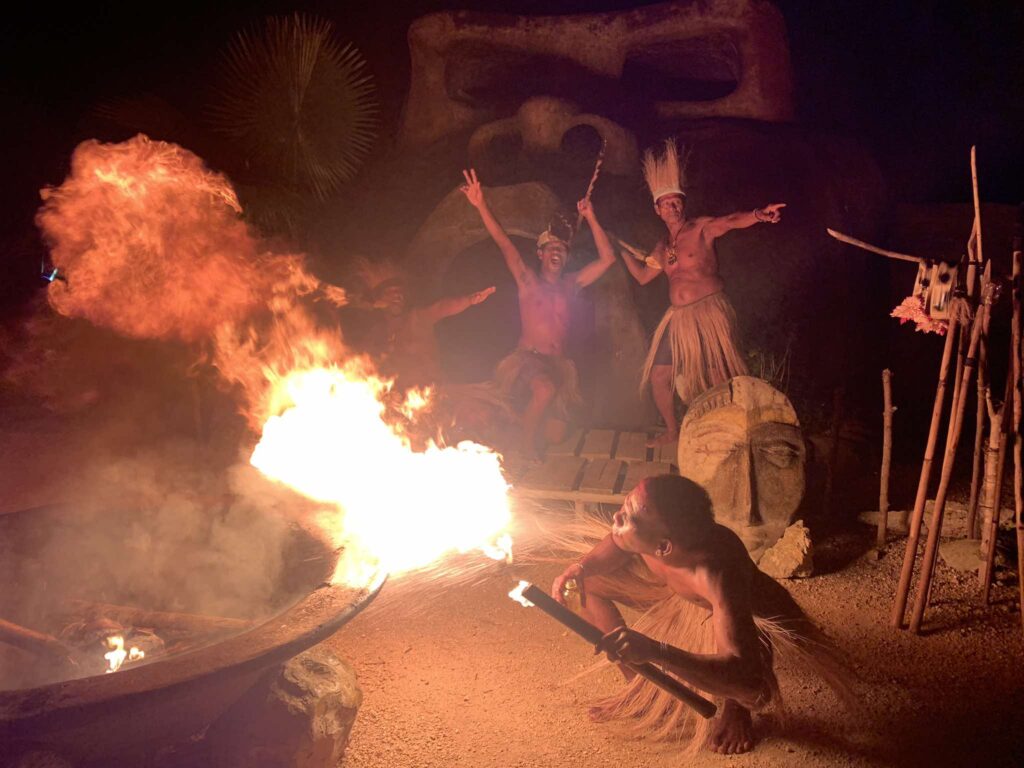Ati Tribe chief in Bohol: How tourism in Loay changed their lives

Members of the Ati Tribe perform for guests of a river cruise in Loay, Bohol.
TAGBILARAN CITY, Philippines — Tourism plays a crucial rule in the lives of Carlos Besida Sr., 66, and his son Carlos Jr.
Both of them earn a living from providing entertainment to guests who take a cruise in a portion of the Loboc River in Loay town in Bohol province.
Wearing their traditional bahag with a headdress on their head, the two men perform with two other tribesmen to the beat of the drum produced by two drumbeaters.
“Malipay mi kun naay mga turista kay mabuhi sad mi,” Carlos Jr. said.
(We are happy if there are tourists because we can survive.)
READ MORE:
Panglao in Bohol in top 10 list of trending destinations for 2025
Cebu named among best islands in the world for 2022
Cebu, Bohol to sign sisterhood agreement
Aside from the donations that they receive, they also sell souvenirs like necklaces and bows and arrows that they make using bamboo and cost P100 to P150 each.

Carlos Besida Sr. (right) and Carlos Jr. (left).
Ati Tribe
Carlos Sr. said members of the Ati Tribe started to arrive in Loay town before the 1970s. His uncle, Leopoldo Segovia, was the first to travel to Loay from Antique, one of the provinces in the Island of Panay, to trade and find other sources of livelihood like farming.
Segovia married a Loay native and started to raise his family there.
Carlos Sr. said that Segovia would always tell the other tribesmen about Loay every time that he would come home to Antique to visit.
The stories from his uncle, captured their interest.
Carlos Sr. said that in the 1970s he started a 12-hour journey with other tribesmen on a small wooden boat that brought them to Loay.
“Nanglangyaw mi. Kung asa mi mabuhi, adto mi,” he said.
(We moved to another place. Where we will survive, we will go there.)
He recalled that their journey wasn’t easy. They were met by huge waves and had to struggle to get to their destination.
New home
As members of the Ati Tribe started to grow in numbers, Leopoldo became their first chieftain in what they now call as their new home. They started to farm and collect wood that they could sell for their livelihood.
Carlos said they tried to raise their families in a foreign land despite the discrimination that they experienced from some of the locals.
When Segovia died, Carlos Sr. became the next chieftain of the Ati Tribe.
To date, many in their community are now going to school. In fact, Carlos Jr. said that a female relative finished college in Cebu and is now working as a policewoman.
Carlos Sr. said they became blessed when the Rio Verde Floating Restaurant started operations after its management tapped them to offer entertainment to their guests. Rio Verde also offers firefly watching along Loay side of the Loboc River from 6:30 p.m. to 8 p.m.
During the cruise, the floating restaurant would make a quick stop in a portion of the river bank to allow guests to watch members of the Ati Tribe perform and to interact with them.
Carlos Jr. said each of the performers earn at least P150 per night. They earn more if tourists would given them bigger donations.
Disclaimer: The comments uploaded on this site do not necessarily represent or reflect the views of management and owner of Cebudailynews. We reserve the right to exclude comments that we deem to be inconsistent with our editorial standards.

